Deep Sea News folks aren’t exactly famous for their love of dolphins (if you haven’t read Dr. M.’s “10 reasons why dolphins are a**holes“, well, you haven’t lived!). But truth be told, our contrarian stance is more about “charisma fatigue” and a rejection of the new-agey woo-woo that seems to surround our flippered friends, than anything substantive about Tursiops (bottlenose) and other dolphin genera. When there’s science to be had, though, you can bet the #DeepSN team will be all about it. And so here I am writing about dolphins at Deep Sea News, for SCIENCE! Wonders will never cease…
Dolphins are trying to tell us something. Not in clicks and whistles, but in tissues and organs. This post has nothing to do with dolphin intelligence and interspecies communication, it’s about what happens when nature loses its complex balance of host-pathogen stability and tips over into a disease outbreak. Right now, dolphins are dying in substantial numbers along the US East Coast. Authorities call this a UME, or Unusual Mortality Event, a bland but descriptive acronym if ever there was one. A UME is a specific situation defined by the Marine Mammal Protection Act, wherein the number of dying dolphins (or any marine mammal) rises significantly above “the usual” rate. Once a UME is declared, the government frees up money for additional research and intervention to address the issue. So what exactly is the problem?
In early summer, more dead dolphins than usual began washing up on beaches in Virginia, Long Island and New Jersey. Over the course of the summer and fall, sick and dead dolphins continued washing up and eventually the strandings spread to Delaware, Maryland, North Carolina, South Carolina, Georgia and even Florida. In an average year in this region, about 300 dolphins strand but so far in 2013 there have been over 1200 (I wouldn’t be surprised if we hit 1400 by EoY). This extensive geographic range includes several different dolphin stocks, both coastal resident animals and more migratory stocks that move over great distances in open waters. Dolphins are still washing up at the time of writing, and this UME has become one of if not the biggest dolphin UME ever.
The overwhelming majority of dolphins tested to date have been positive for cetacean morbillivirus, a virus in the same group as the human measles virus. This is a specific agent that seems to pose little risk to other animals or to people, but which is evidently lethal to dolphins. The rate of positive antibody tests from UME dolphin blood samples is a very strong circumstantial case for a morbillivirus epizootic (a large-scale disease outbreak among animals). Its unlikely that we will ever have stronger evidence than that, because to fulfill, for example, Koch’s postulates in this case would be kind of unethical!

It’s not an unprecedented epizootic, however. There was another dolphin UME on the Atlantic coast in 1987-88 that killed over 700 bottlenose dolphins, which was also (later) attributed to morbillivirus. In fact, it was that event in part that lead to the UME provisions in the Marine Mammal Protection Act in the first place.
Why do these things happen? The short answer is that we don’t really know. From a disease ecology point of view, natural ecosystems are staggeringly complex, so much so that trying to nail down a single cause is probably futile. It may be meaningless anyway, because with multiple age/size classes of multiple stocks affected in multiple habitats along an extensive stretch of coastline, the only things that may be common among all these cases could well be the host and the pathogen! Its entirely possible, indeed likely, that significant differences exist in the underlying stressors that made the dolphins susceptible to both infection by the pathogen and the disease that results when they fail to fight it off.
Perhaps the most important lesson to be learned here is simply that something is profoundly out of whack right now. Dolphins are apex predators and we know from studies like the long-running HERA project that they are excellent sentinels of coastal ocean health. They bioaccumulate toxins from lower in the food web with ruthless efficiency and, as mammals like us, they express disease in ways that resonate with human health. For example, check out this paper about multi-drug resistant E. coli in dolphins in Florida. Where do you think they got that from huh? Yep, probably us, possibly from hospital effluent.
Regarding morbilivirus, which they did NOT get from us, it may be that these epizootics are cyclical or sporadic, only time will tell. But for the next little while at least the stranding response networks on the east coast are going to be working overtime.
If you have questions about the dolphin UME, especially if you live in the affected areas and are worried about risks to your health or that of your pets, I strongly recommend this NOAA/NMFS page loaded with Frequently Asked Questions about the current outbreak.

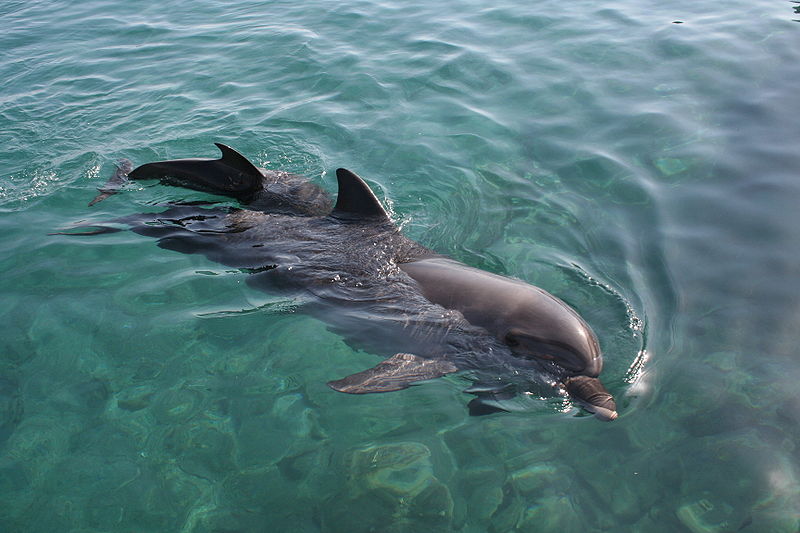

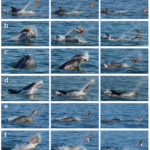

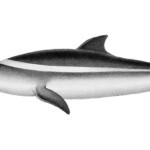
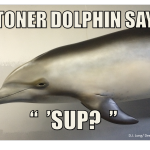
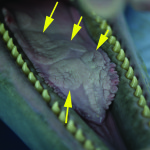
The last time something like this occurred was two years after Chernobyl? Gosh, what are the odds?
I grew up swimming with dolphins and watching birds. Both genus have greatly declined in numbers since the mid 80’s. What are the odds?
I also grew up with an understanding of the power of nukes.
Our world has been greatly altered by nukes. You, as a fellow lover of our natural world, may be in denial, but the available science pointing to the near utter extermination, really can not be denied.
Peace.
To stay in the theme of ‘theworldisending/DOOM/conspiracies’… what about the BP deep horizon oil spill and the disruption of ecosystems? Is there a possibility that dolphin populations are affected by accumulated pollutants in the food web? The Gulfstream more or less passes the US E coast (or at least these dolphins would’ve swam through these waters at least a few times by now). Of course, this doesn’t really explain previous UME’s of dolphins (unless there were other large oil spills and other environmental calamities).
Just a brainfart… as per usual :)
Are you really suggesting that dolphin deaths due to morbilivirus on the US east coast are caused by the Fukushima incident? What is your proposed mechanism? The two bodies of water are about as disconnected as is possible. If it were the cause, I would expect a proximity effect wherein dolphins closer to Fukushima had a higher rate of morbilivirus infection, but that’s not what we see.
Contrary to your comment, bottlenose dolphins are not endangered. I am not aware of any data to support the idea that they have greatly declined since the 1980’s; getting robust data about that sort of global trend is very difficult because there are so many stocks that interact to varying degrees or not at all.
In your reply you say twice “what are the odds?”. That is a question scientists constantly seek to answer, but they do it using data to show causal connections, not by inducing causality from correlation. (100% of car crash victims ate breakfast that day, so clearly breakfast is bad and we should all skip it…) In thinking about this and other environmental problems, I would urge you to think about anytime you hear yourself saying “it must be” [the nukes, the oil spill etc]; it is a pretty good indicator that what follows is correlation masking as causality. You’ve made a causal link between Chernobyl and the 87/88 UME and between Fukushima and the 2013 UME, but these are almost certainly simple coincidences. I also recommend you read “The Drunkards Walk” by Leonard Mlodinow; it’s a great book that talks a lot about how randomness can trick us in this way and how our brains are hard wired to see patterns where none exist.
Not a bad thought, and certainly more plausible than Fukushima. Again, though, I would expect a proximity effect, wherein animals closest to the spill site would have the highest incidence of disease. But the morbilivirus outbreak started in the north and spread SOUTH, which is the opposite direction of the Gulf Stream flow.
There WAS a UME in the Gulf of Mexico after the oil spill, but it started before the spill, so that could not have been the cause. I blogged about it here: https://www.deepseanews.com/2011/04/cold-hard-data-vs-warm-baby-dolphins/